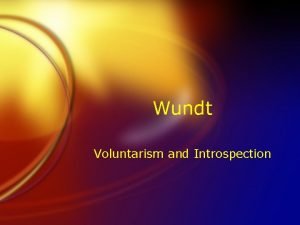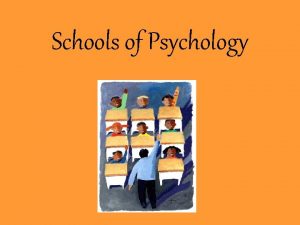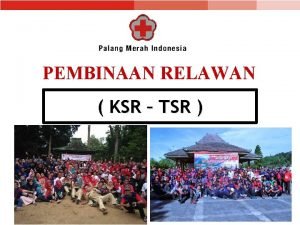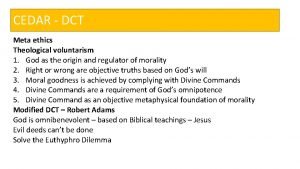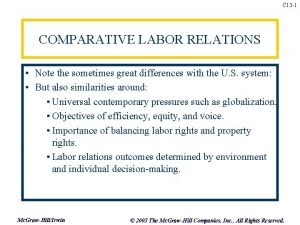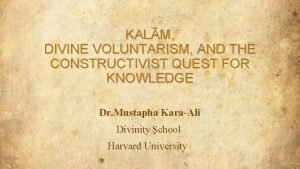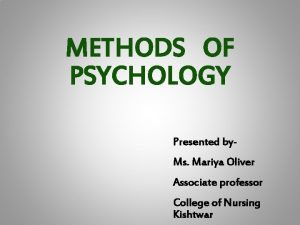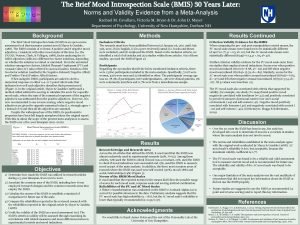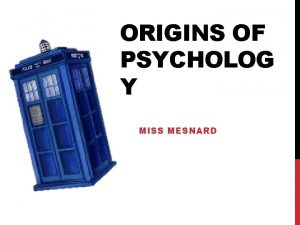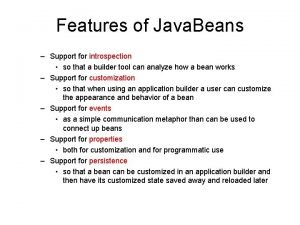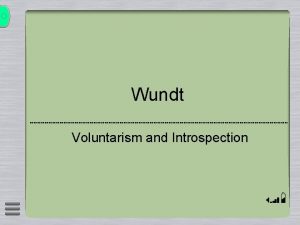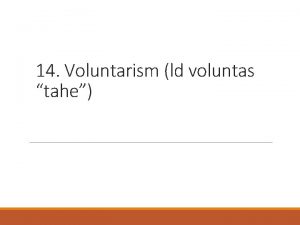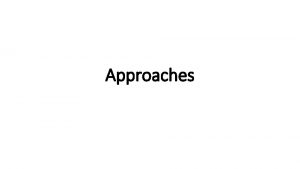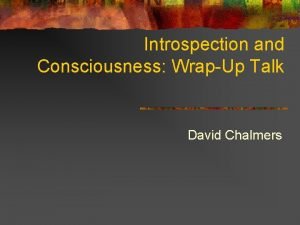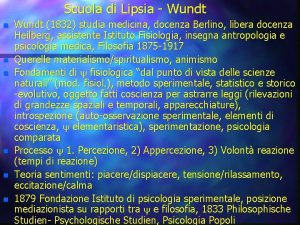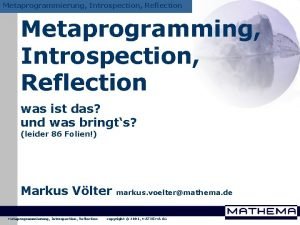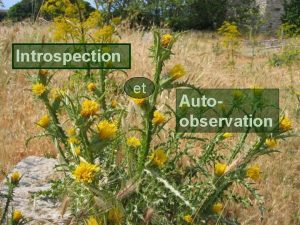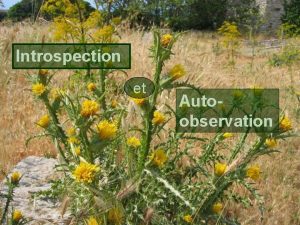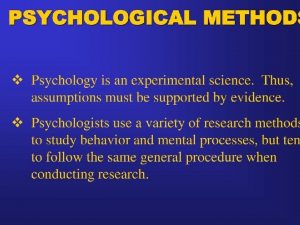Wundt Voluntarism and Introspection Voluntarism not volunteerism FVoluntarism















- Slides: 15

Wundt Voluntarism and Introspection

Voluntarism, not volunteerism FVoluntarism: the power of the will to organize the mind’s content into higher-level thought processes. FAn associationist model, from simple elements to larger compounds, but it does not simply progress mechanically, the will has an organizing effect.

The contents of the mind FBasic immediate experience (ex: the experience of “redness” or “discomfort”) FWundt wanted to catalog all possible basic immediate experiences, and form a “periodical table of elements” as chemistry did. FThe way to observe consciousness is through the method of introspection.

The method of introspection FIntrospection or internal perception (intro = inside, spectare: looking) FObservation of simple processes under very careful conditions that can be replicated FObservers were extensively trained (10, 000 observations before they were considered trained)

The Method of mental Chronometry FInvented by Donders FMakes use of reaction time FThe more complex mental operation takes more time.

Elements of conscious experience FSensations: the result of the stimulation of a sense organ. Classified by: FIntensity, duration, sense modality FFeelings: the affective tone of a sensation

Sensations (1) F General sense: F Pressure, heat, cold F Sound F Simple noise, simple tone F Smell and taste F Smell: hard to categorize F Taste: sour, sweet, bitter, salty

Sensations (2) FLight FAchromatic (black/white) FChromatic (colors) FDimensions: tone, saturation, brightness

Feelings FPleasant /unpleasant FExcitement/depression FTension/relaxation

Psychical compounds FIdeas (composed of several sensations) FComposite feelings (several feelings mixed together) FEmotions (typical form in which affective processes occur). Emotions have a temporal quality: beginning, middle, end. FVolitions (changes in ideas and feelings that bring an emotion to a close)

General consciousness FInterconnects the psychical compounds FWhen connections are broken, unconsciousness or sleep results FThe process of synthesis is creative, growth oriented, and leading toward the development of opposites

The field of consciousness FEverything that is in the field of consciousness at one time. FIncludes: FWhat is subject to apperception, and is perceived clearly FWhat is subject to Apprehension, and is not seen clearly --background material, existing as a potential for apperception.

Apperception FApperception is a volitional process, i. e. it has to do with the will. FIt is the will that directs the attention and is at the basis of the creative synthesis that leads to the construction of knowledge

Apperception and clinical psychology FProjective tests such as the Rorschach and the TAT are based on the concept of apperception. FTAT: Thematic Apperception Test FWhy is it that we perceive reality this or that way?

The End
 Voluntarism definition psychology
Voluntarism definition psychology Wundt structuralism definition
Wundt structuralism definition Volunteerism adalah
Volunteerism adalah Elements of volunteerism
Elements of volunteerism Meta ethics vs normative ethics
Meta ethics vs normative ethics Voluntarism apush
Voluntarism apush Divine voluntarism
Divine voluntarism Advantages of introspection method
Advantages of introspection method Brief mood introspection scale reliability and validity
Brief mood introspection scale reliability and validity Not genuine, not true, not valid
Not genuine, not true, not valid Reflection vs introspection java
Reflection vs introspection java Origins
Origins Introspection vs metacognition
Introspection vs metacognition Introspection ap psychology
Introspection ap psychology History and origin of science of psychology slideshare
History and origin of science of psychology slideshare Features of java beans
Features of java beans
